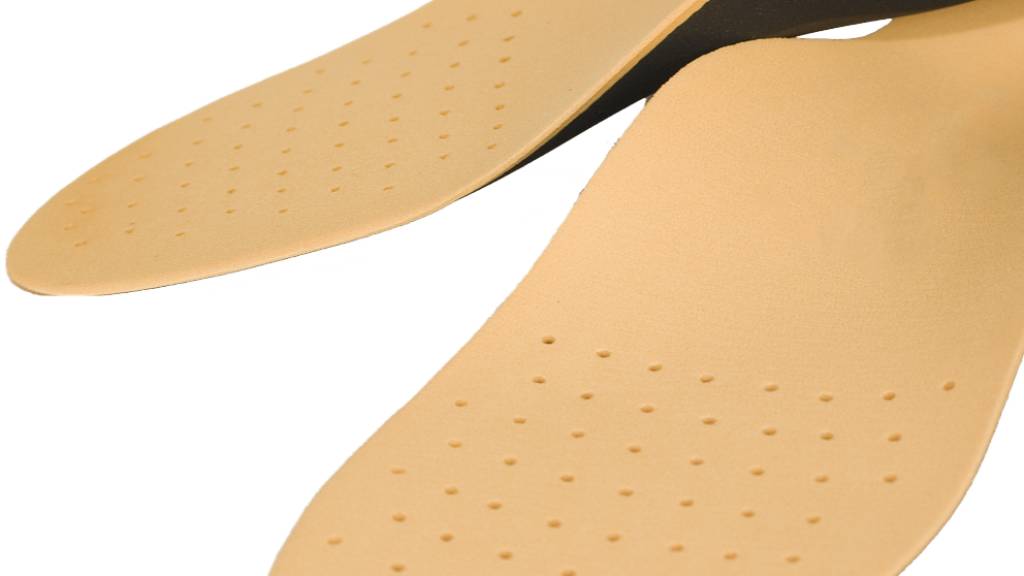Orthopedic Insoles: Personalized Solutions for Foot Well‑Being
In the wide field of orthopedics, insoles offer a versatile and personalized solution for many issues related to foot health and posture. These custom-made medical devices provide essential support to improve the quality of life for people affected by orthopedic conditions or in need of biomechanical assistance.
Mechanism of Action and Therapeutic Benefits
Orthopedic insoles work by redistributing forces and weight loads on the foot. This is based on the biomechanical principle that proper weight distribution can reduce stress on specific areas of the foot and improve overall alignment of the lower limbs.
Their action operates on several levels:
-
Arch support: helps prevent excessive flattening of the foot during walking
-
Shock absorption: specific materials cushion impact with the ground, reducing joint stress
-
Postural correction: slight modifications to foot angles improve alignment of ankles, knees, and hips
-
Pressure redistribution: targeted zones relieve pressure from painful or inflamed areas
These mechanisms result in several important therapeutic benefits:
-
Reduced pain in conditions like plantar fasciitis, metatarsalgia, and heel pain
-
Improved stability and balance, especially important for older adults or those with postural instability
-
Prevention of secondary issues such as lower back or knee pain caused by poor foot biomechanics
-
Increased comfort during walking and daily activities, improving overall quality of life
Types of Insoles and Their Applications
The versatility of orthopedic insoles is reflected in the wide range of types available, each designed to address specific needs:
Pain-relieving insoles
Designed primarily to manage pain, these insoles use soft, cushioning materials to relieve pressure in targeted areas. They are suitable for conditions such as advanced osteoarthritis, deforming arthritis, gout, and diabetic foot complications. Their main goal is immediate relief and improved mobility despite chronic or acute pain.
Corrective insoles
Mainly for children and adolescents, these insoles correct issues like flat feet, excessive rearfoot pronation, or forefoot varus. With wedges, pads, and supports, they gradually guide the foot into better alignment, supporting musculoskeletal development during growth.
Biomechanical insoles
Engineered to optimize foot mechanics during motion, these insoles help manage plantar fasciitis, metatarsalgia, and various tendinopathies. By improving load distribution and alignment, they reduce pain and increase movement efficiency while lowering injury risk.
Phlebological insoles
Intended for patients with circulatory issues, these are often made with latex or similar materials and designed to promote venous and lymphatic return. They are helpful for people with chronic venous insufficiency, lower-limb edema, or pregnant women. They help reduce swelling, relieve heaviness, and improve comfort during prolonged walking or standing.
Post-surgical insoles
Used during recovery from lower-limb surgeries, such as hip or knee prosthetics, these insoles support posture realignment, compensate for leg length differences, and promote correct weight distribution. Their use can accelerate healing and reduce the risk of complications.
Preventive and diabetic foot insoles
These insoles are designed to prevent ulcers and foot complications in diabetic patients. By offloading pressure points and preventing pressure sores, they are essential for people with peripheral neuropathy or diabetic arteriopathy. They help preserve skin integrity and overall foot health.
Materials and Manufacturing Process
Material selection is essential to ensuring the effectiveness of the insoles. Commonly used materials include:
-
Synthetic compounds: such as EVA (ethylene-vinyl acetate) or polyurethane, offering shock absorption and moldability
-
Light alloys: used for structural elements requiring strength and lightness
-
Composite materials: blending different materials for optimized support, comfort, and durability
-
Natural materials: such as cork and leather, providing breathability
-
Carbon fiber: offering firm support in a compact format, ideal for slim-fitting orthoses
The creation of custom orthopedic insoles begins with a thorough patient assessment. This includes postural analysis, gait evaluation, and structural foot examination. Advanced tools like 3D scanning or computerized gait analysis help gather precise biomechanical data.
Based on this data, a custom insole is designed. Fabrication may involve manual molding, computer-aided milling, or 3D printing, depending on case complexity and available technologies.
Effectiveness depends on precise design, material choice, and fit within appropriate footwear. The orthopedic technician, a licensed healthcare professional, is responsible for designing, fabricating, and adjusting these orthoses.
Guidelines for Use
To maximize the benefits of orthopedic insoles, patients should follow key recommendations:
-
Adaptation period: it’s normal to take time to get used to new insoles. Begin with short wear periods and gradually increase usage
-
Footwear selection: choose shoes that offer enough space and support for the insoles. Deeper or higher-volume shoes may be necessary
-
Maintenance: clean insoles regularly, following care instructions. Some materials may require specific treatments
-
Follow-up: schedule regular check-ups with the specialist to monitor effectiveness and make necessary adjustments
-
Replacement: depending on materials and usage, insoles generally need to be replaced every 12 to 18 months or as advised by the orthopedic technician
Conclusion
Orthopedic insoles are an effective therapeutic tool for a wide range of foot and posture-related issues. Their ability to be tailored to individual needs makes them an invaluable resource in orthopedic care.
However, it is essential that the prescription and creation of orthopedic insoles be carried out by qualified professionals. Only with accurate assessment and expert design can these devices deliver their full benefit and improve the patient’s quality of life.
If you suspect you have foot or posture problems that could benefit from orthopedic insoles, we recommend consulting with an orthopedic specialist. A professional evaluation will determine whether insoles are the right solution and ensure a design tailored to your specific needs.
For more information, visit us at Ortopedia in Via Taramelli 21/23 in Bergamo or contact us.
? We are available at 035 212110, Monday to Saturday from 9 to 12:30 and 15 to 19
? Or email us at: info@ortopediazambelli.it


